Sports Tech@TDK
The Art of Precise Attachment: What Do Boccia and Magnets Have in Common?
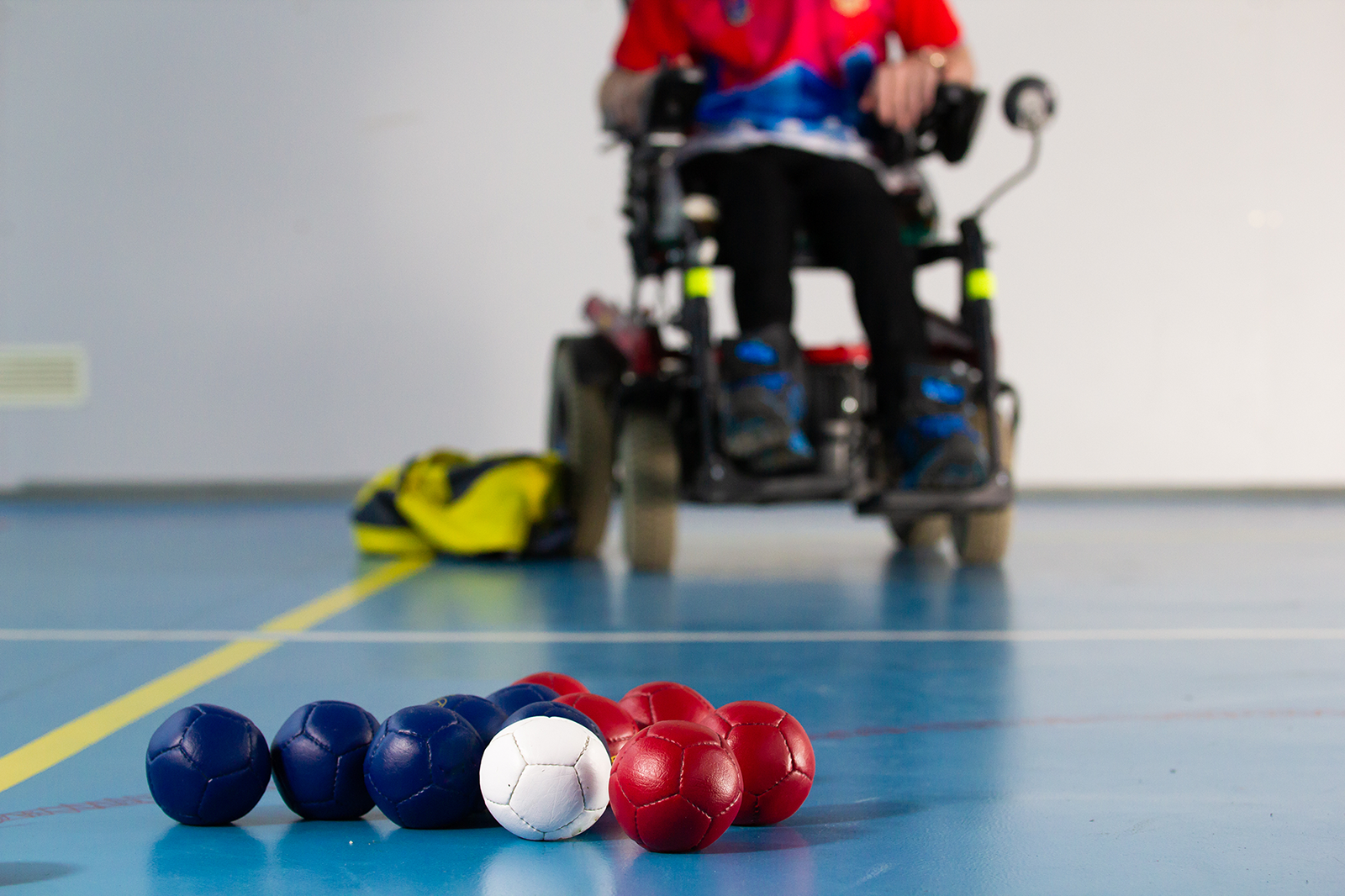
Boccia made headlines at the 2021Tokyo Paralympics Games when Hidetaka Sugimura won the gold medal in the individual competition, a first in Japanese history. The sport was invented in Europe for people with severe cerebral palsy and those with severe functional disabilities of the limbs. It can be enjoyed by anyone, physically challenged to the able-bodied alike. In recent years it has become a popular activity for communities looking to interact with each other.
A Smart Sport That Anyone Can Do
Boccia is a sport in which players throw or roll red and blue balls toward a white ball called the jackball in an effort to see who can get their ball closer. There are one-on-one individual matches as well as pair and team matches. Players throw 6 balls each round (or “end”) on a rectangular court measuring 6 meters wide by 12.5 meters long. The winner is determined by the total score after 4 ends for individual and pair matches, or 6 ends for team matches. The rules are really simple - just put your balls closer to the jackball than your opponent - but the tactical moves and reversals that can occur in just a single throw make it an exciting competition that spectators can feel involved in.
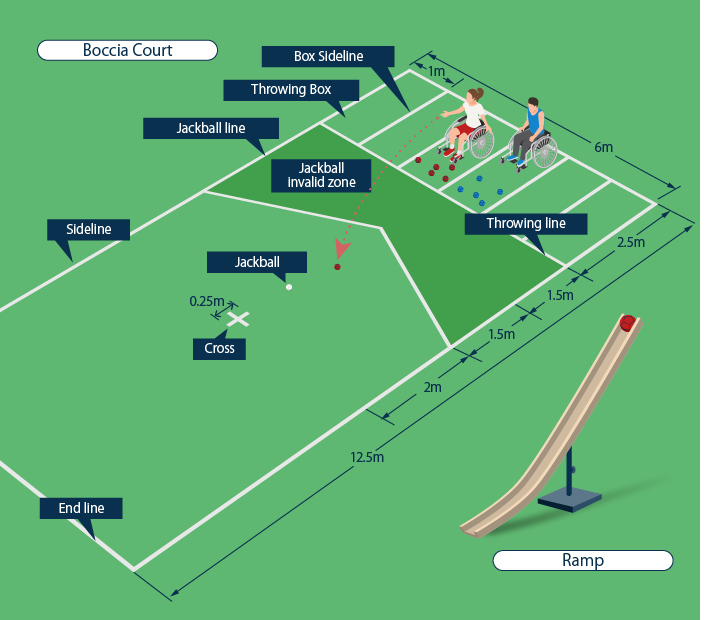
Boccia is played on a rectangular indoor court measuring 6 meters wide by 12.5 meters long. Even if you cannot throw the ball due to a disability, you can use a ramp to slide the ball down.
Given the sport was originally designed for people with severe cerebral palsy and other severe functional disabilities, if a person cannot roll the ball due to their disability, they are allowed to communicate their intention to a caregiver and the caregiver can roll the ball using a ramp.
Boccia, like curling, is a competition to see how close you can place your ball next to a target, in this case a jackball. There are a variety of approaches you can take, such as bumping your ball into an already thrown ball to push it away, or tossing a ball from above so that it lands on top of an existing ball. The team with the closest ball to the jackball wins the end and the score is determined by the number of balls. If there is more than one ball close to the jackball, you draw a circle around it and count the number of balls in the circle, as shown in the figure below.
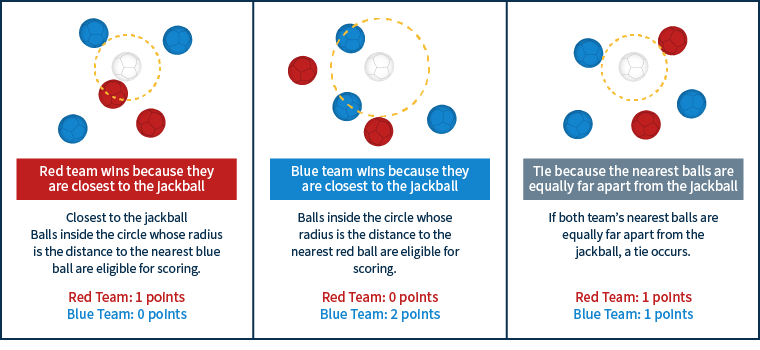
Choosing Ball Types to Get the Ball to the Target
In order to make the most of the six balls that can be thrown, players use different types of balls, such as rolling balls, stopping balls and bouncing balls.
The balls can be made of natural leather, artificial leather, or felt and the amount of stuffing can be adjusted within a range of plus or minus 12g from the default weight of 275g. This is why balls with different rolling and stopping characteristics are prepared. For example, they include a ball that rolls well, a ball that doesn’t roll easily at all when thrown but sits exactly where it lands, or a hard ball that bounces off the opponent's ball. Each of the six balls can be used only once, so one of the key strategies is to decide which ball to use at which time.
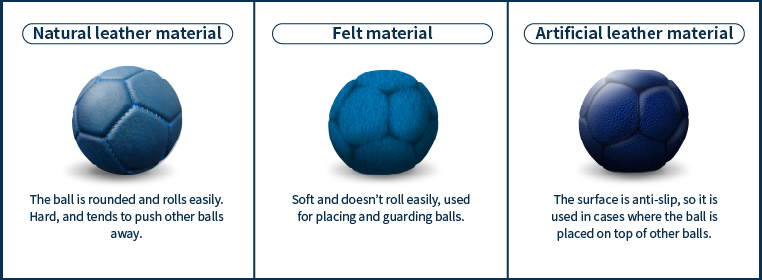
The most important part of the boccia game is to get your ball as close as possible to the jackball. The terminology in boccia got brought up a lot in discussions during the live broadcast of the Tokyo Paralympics. The key to victory, though, is to stop the ball exactly where you want it.
Each throwing technique has its own name, whether it is stopping the ball, repelling the opponent's ball, or placing it on top of another ball. Throwing techniques such as approach, hit, push, rising, and lobbing are shown in the figure below.
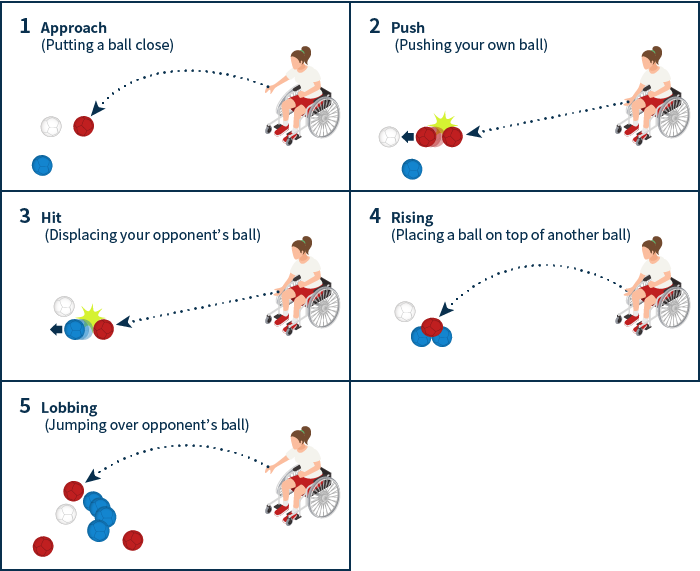
The technique called "lobbing" in which the ball is lobbed over the opponent’s blocking balls and landed directly next to the jackball with perfect placement fascinated spectators, in particular. The way the ball stops is akin to a magnet’s attraction, and is considered one of the most difficult techniques in boccia.
The Strongest Neodymium Magnet that Attracts Iron with a Snap
Neodymium magnets have the strongest magnetic force, attracting iron like a ball thrown by a top boccia player.
Neodymium magnets, which are made from neodymium, a type of rare earth, iron and boron, are about 10 times stronger than ferrite magnets and are said to be the strongest magnets in the world. Neodymium magnets of even only about 1 cm in size have a hard time being pulled apart from each other, even with the force of an adult. Because of their small size but strong magnetic force, they are widely used in PC HDDs, speakers, various motors, electric vehicles, medical equipment, wind power generators and others that help to make various devices smaller and more powerful.
Here is a review of the history of the development of magnets. The main types of magnets currently produced in the industry can be broadly classified into metal magnets and oxide magnets (ferrite magnets). Among these, metal magnets, which feature strong magnetic force, include alloy magnets such as alnico magnets and rare earth magnets such as neodymium magnets. Alnico magnets, which were the mainstay of magnets until the mid-20th century, are manufactured by placing molten metal material in a mold and subjecting it to a special heat treatment. This is called a cast magnet. Rare earth magnets, like the neodymium magnet which was invented in the 1980s, replaced alnico magnets and continue to hold the title of the strongest magnet in history.
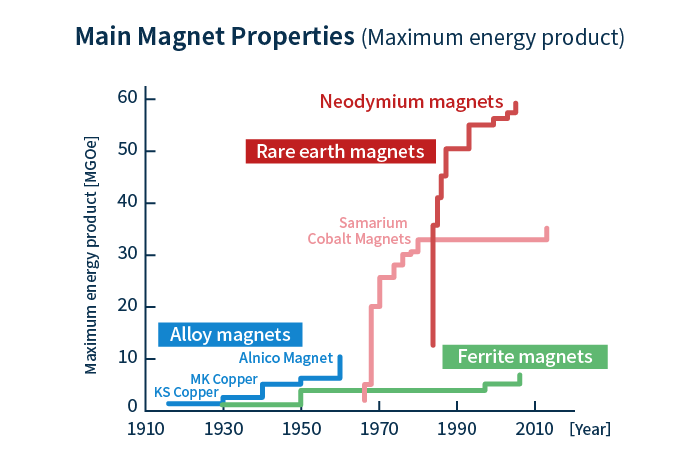
Source: Compiled from materials provided by the National Institute of Advanced Industrial Science and Technology
Although neodymium magnets have the strongest magnetic force, there is still room for improvement. Neodymium magnets are manufactured by molding and sintering precisely controlled powder materials. TDK has successfully developed the world's most powerful neodymium magnet with significantly improved magnetic properties by applying its wealth of materials technology experience on a nanoscale level, refining and homogenizing the raw material powder and controlling the firing temperature and atmosphere to a fine degree.
TDK is also developing high-performance magnets that do not use any rare earths, such as DY (dysprosium) and Tb (terbium). These are added as additives in the manufacture of neodymium magnets as well as other high-performance magnets using its proprietary HAL process, which significantly reduces the amount of heavy rare earths used compared to more conventional methods. The latest magnets, which attract objects with their powerful magnetic force, are used in a variety of situations, including electronics and are also pulling in possibilities on the horizon.
Neodymium magnets

TDK's neodymium magnets achieve the world's highest level of residual flux density and holding magnetic power, (BH) max. This enables dramatically smaller, thinner, and more powerful magnet-applied devices.
TDK is a comprehensive electronic components manufacturer leading the world in magnetic technology







